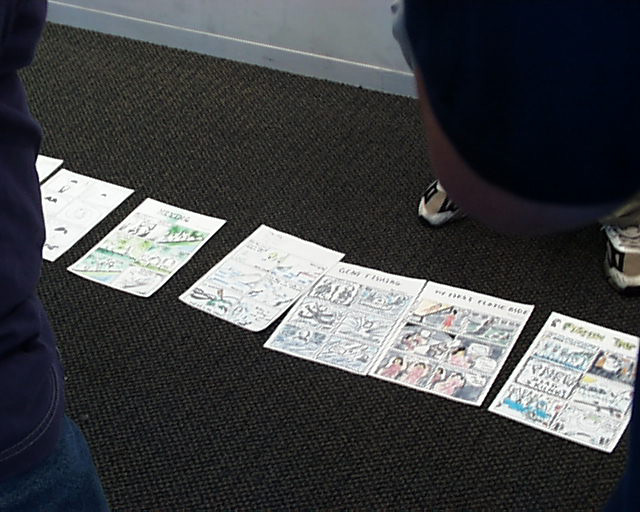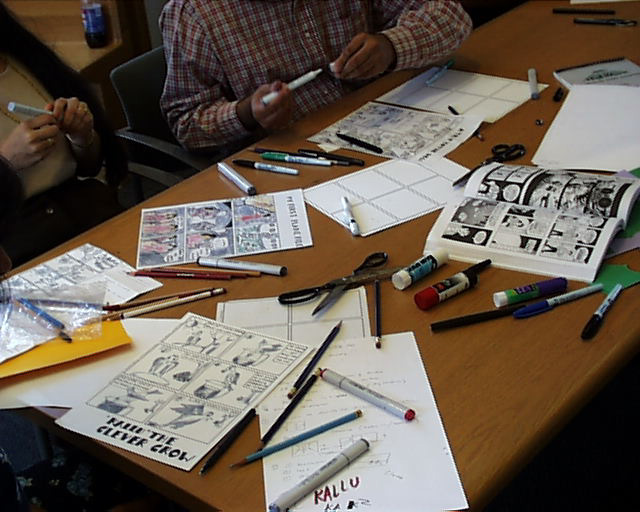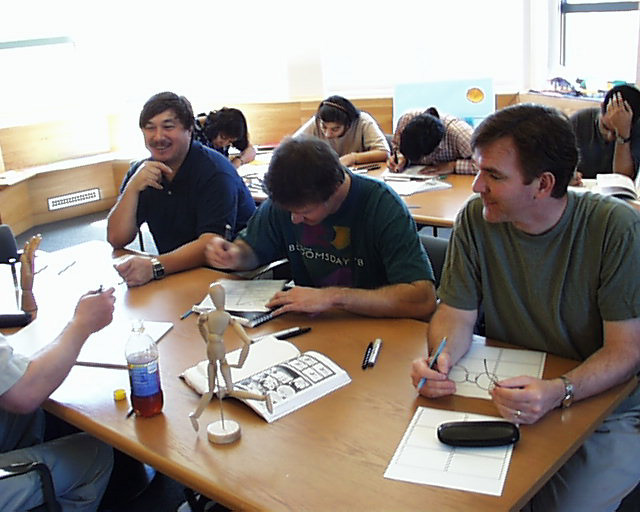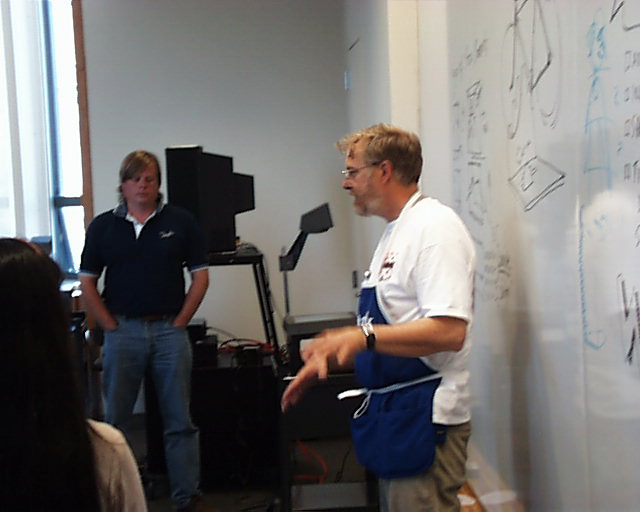 This two
day workshop was run by Ken O'Connell (shown at left), from the University of
Oregon, who had spoke to animators about storyboarding at UW last winter as part
of an animation production series of visiting lectures.
This two
day workshop was run by Ken O'Connell (shown at left), from the University of
Oregon, who had spoke to animators about storyboarding at UW last winter as part
of an animation production series of visiting lectures. The Summer 2000 PMP Animation course took the new approach of offering day-long weekend workshops to complement the regular evening sessions. This was the third workshop.
 This two
day workshop was run by Ken O'Connell (shown at left), from the University of
Oregon, who had spoke to animators about storyboarding at UW last winter as part
of an animation production series of visiting lectures.
This two
day workshop was run by Ken O'Connell (shown at left), from the University of
Oregon, who had spoke to animators about storyboarding at UW last winter as part
of an animation production series of visiting lectures.
Ken began his lecture by explaining the importance of proper storyboarding in
the animation production pipeline. Creating simple storyboards and
animatics out of common materials allows the director and screenwriter to gain
an accurate sense of the timing and flow of a story w/o needing to spend many
man-hours and dollars creating computer models and animations for the entire
piece just to preview
the quality and timing of the story. It is only after many storyboard and
simple animatics that the final cut of the story is approved and is passed on to
the animation division for creation of the digital film.
A storyboard and animatic serve similar purposes, but have different characteristics. A storyboard is a collection of static images, usually hand-drawn, depicting key sections of each scene in a film. It allows the director to visualize how the character placement and setting of a particular scene will eventually appear. An animatic is, most simply, an animated storyboard. The storyboards are scanned in digitally and a movie is created out of them depicting the timing of each scene, and basic character motions. A second type of animatic contains actual motion, rather than a series of static images. This type of animatic generally uses crude, often real world models, to depict characters and simple backgrounds are erected mimicking the actual scene. Very rough linear motions which follow the script are then filmed using these stand-ins, allowing the director and screenwriter to gauge the feasibility and correctness of their blocking and camera motion for each shot.
To illustrate these concepts the student took part in three exercises. The first centered around creating, as a group, the storyboard for a short animated film about fishing. The students broke up the shots among themselves and each drew the storyboards for one or two scenes. Following this exercise, the students tried their hand at creating a short animatic based on an animated film centering around a circus. The students were broken up into teams once again and were charged with the task of taking the everyday materials provided and creating an animated storyboard or animatic out of them. The goal was to be as simple as possible but still convey the timing, placement, and general plot for each shot.
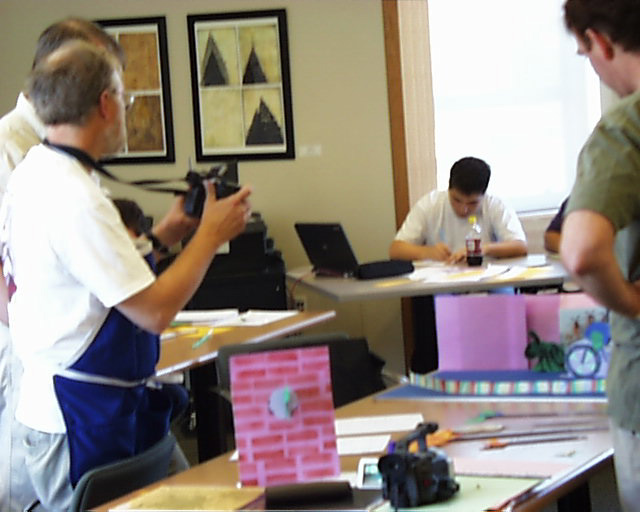
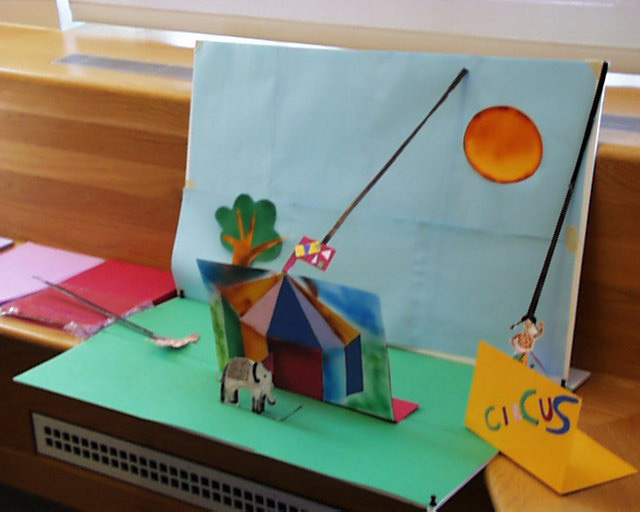
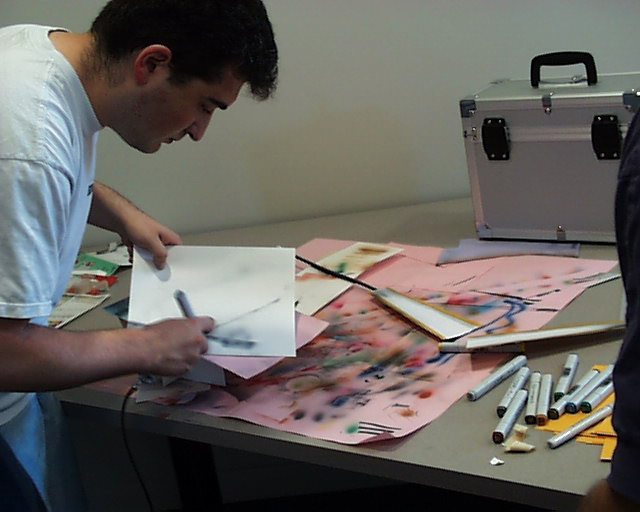
The final animatic created by the students can be found here (3min-AVI-30MB).
Following the creation of an animatic, the final exercise had the students practice their drawing skill by creating a 5 panel storyboard depicting a short story of their choice, which could potentially be turned into a brief animated short. While creating these storyboards, the students focused on depicting the key elements of each shot, without an excess of detail.
